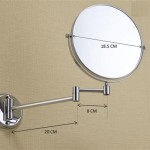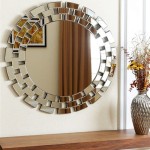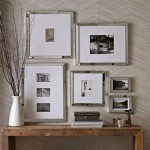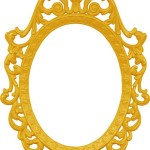Mirrors in Baby Nurseries: Safety, Sensory Development, and Design Considerations
Mirrors are frequently incorporated into home décor for aesthetic and functional purposes. Their ability to reflect light and create the illusion of space makes them particularly appealing in smaller rooms. The potential advantages of incorporating mirrors in a baby nursery are multifaceted, extending beyond mere decoration to encompass elements of cognitive development and sensory exploration. However, careful consideration must be given to safety aspects, installation methods, and the specific types of mirrors used to mitigate potential hazards.
This article will explore the diverse considerations relevant to the safe and effective use of mirrors in baby nurseries. It will address aspects of infant development that are stimulated by mirrors, the selection of appropriate mirror types, secure installation practices, and design principles that ensure the nursery environment is both stimulating and secure for the developing child.
Sensory Development and Cognitive Stimulation
The introduction of a mirror into a baby's environment can play a significant role in their sensory and cognitive development during the early months and years. Very young infants, initially unable to recognize themselves, begin to observe the reflected image as a novel visual stimulus. This interaction fosters the development of visual tracking skills as they follow the movements of the reflected image.
As the infant's cognitive abilities mature, they gradually begin to associate the reflection with their own movements. This is a crucial step in developing self-awareness. The observation of their own actions in the mirror provides a unique form of feedback, helping them understand cause-and-effect relationships. For example, they may discover that waving their arm in front of the mirror results in the reflected arm also waving. This direct visual reinforcement contributes to their understanding of bodily control and spatial awareness.
Furthermore, mirrors can function as a stimulating element for tummy time activities. Placing a mirror within the baby's field of vision during tummy time can encourage them to lift their head and extend their reach, thereby strengthening neck and upper body muscles. The visual interest provided by the reflection can prolong the duration of tummy time, maximizing its developmental benefits.
Beyond physical development, mirrors can also contribute to social-emotional growth. Observing their facial expressions and imitating them in the mirror can enhance their understanding of emotions and non-verbal communication. The playful interaction with their reflection can also foster feelings of joy and self-discovery.
It is, however, important to manage expectations realistically. Infants do not immediately grasp the concept of self-recognition. The process unfolds gradually over several months, with milestones such as recognizing themselves in pictures and responding to their name contributing to a growing sense of identity.
Mirror Selection: Safety and Material Considerations
The safety of the child is paramount when selecting a mirror for the nursery. Traditional glass mirrors pose a potential hazard if shattered. This necessitates specific considerations regarding material and construction.
Acrylic mirrors, also known as plastic mirrors, are a common alternative to glass. Acrylic is less prone to shattering and tends to break into larger, less sharp pieces if damaged. This significantly reduces the risk of cuts or puncture wounds. When selecting acrylic mirrors, it is crucial to ensure they are made from high-quality, impact-resistant acrylic that is specifically designed for use in children's environments. The thickness of the acrylic sheet also plays a role in its durability; thicker sheets are generally more resistant to bending or breaking.
Another option is mirrored films or decals. These are typically made from reflective plastic and can be applied directly to smooth surfaces like walls or furniture. While offering a visual effect similar to a mirror, these films do not provide a perfect reflection and may distort the image slightly. Their main advantage is their lightweight nature and minimal risk of shattering. However, the adhesive used to apply the film must be non-toxic and safe for use in a nursery environment.
Regardless of the material chosen, the mirror should be free of sharp edges or corners. Rounded edges are preferable to minimize the risk of accidental cuts or scrapes. If the mirror has a frame, it should be constructed from durable, non-toxic materials and securely attached to the mirror surface. Avoid frames with small, detachable parts that could pose a choking hazard.
It is also advisable to consider the potential for distortion. Some low-quality mirrors, particularly those made from inexpensive acrylic or film, may produce a distorted reflection. This can be confusing and potentially unsettling for the child. Opting for mirrors from reputable manufacturers known for producing high-quality optical surfaces is crucial to ensure accurate and clear reflections.
Before installing any mirror, thoroughly inspect it for any existing cracks, chips, or other defects. Damaged mirrors should not be used in a nursery environment, as they pose a risk of further breakage and potential injury.
Installation and Design Principles for Nursery Mirrors
Proper installation is as important as selecting a safe mirror. The method of installation must ensure that the mirror is securely attached and cannot be easily dislodged by a child. The chosen location should also be carefully considered to maximize the benefits of the mirror while minimizing potential risks.
Mirrors should be mounted securely to the wall using appropriate hardware. For heavier mirrors, it is essential to anchor them directly to wall studs to provide maximum support. The hardware used should be strong enough to support the weight of the mirror and should be installed according to the manufacturer's instructions. Avoid using adhesive alone to mount mirrors, especially larger ones, as adhesive can fail over time, leading to the mirror falling and causing potential injury.
When deciding on the placement of the mirror, consider the child's developmental stage and typical activities in the nursery. For infants who spend a significant amount of time on their backs or during tummy time, placing the mirror at a low level within their field of vision is ideal. This allows them to easily observe their reflection and engage with the visual stimulus. However, ensure the mirror is far enough away that the child cannot easily reach it with their hands or feet.
For older babies and toddlers who are more mobile, consider placing the mirror in an area where they can interact with it while standing or crawling. A popular option is to incorporate a mirror into a play area or activity center. This allows them to explore their reflection while engaging in other activities.
Avoid placing mirrors directly above cribs or changing tables. This minimizes the risk of the mirror falling onto the child if it were to become dislodged. Also, be mindful of potential glare from sunlight or artificial light. Placing a mirror in direct sunlight can create a harsh glare that is uncomfortable for the child and can interfere with their vision.
Incorporate the mirror into the overall design of the nursery. Mirrors can be used to create a sense of space and light in a small room. Consider using a large mirror on one wall to create the illusion of a larger area. You can also use smaller mirrors to add visual interest to the room without overwhelming the space.
Consider framing the mirror to complement the nursery's theme and color scheme. A wooden frame can add a touch of warmth and texture, while a brightly colored frame can add a pop of color. Ensure the frame is securely attached to the mirror and free of any sharp edges or small, detachable parts.
Regularly inspect the mirror and its mounting hardware to ensure it remains secure and in good condition. Tighten any loose screws or bolts, and replace any damaged hardware immediately. If the mirror shows any signs of cracking, chipping, or other damage, remove it from the nursery to prevent potential injury.
Ultimately, the decision to incorporate a mirror into a baby nursery should be made with careful consideration of safety, developmental benefits, and design aesthetics. By selecting appropriate mirror types, implementing secure installation practices, and following established safety guidelines, parents and caregivers can create a nurturing and stimulating environment that supports the child's growth and development.

How To Use Mirrors In The Nursery Design Studio

Okay Round Mirrors Are Officially Everywhere Nursery Baby Girl Room Wall Decor Bedroom

Mirror In A Child S Room Good Or Bad Idea

Check Out These Stunners Project Nursery

Elegant Pink Grey Nursery Project Baby Girl Decor And Gray Room
The Importance Of Montessori Wall Mirror And Why You Need One How We

Like The Non Changing Table Idea With Wicker Baskets And A Hanging Mirror For Nursery Baby Girl Room Decor

2024 Nursery Decor Forecast Top Baby Girl Themes For The Year
Pediatricians Reveal What To Remove From A Nursery When Babyproofing

Nursery Wall Decor Above The Changing Table O Central Avenue








